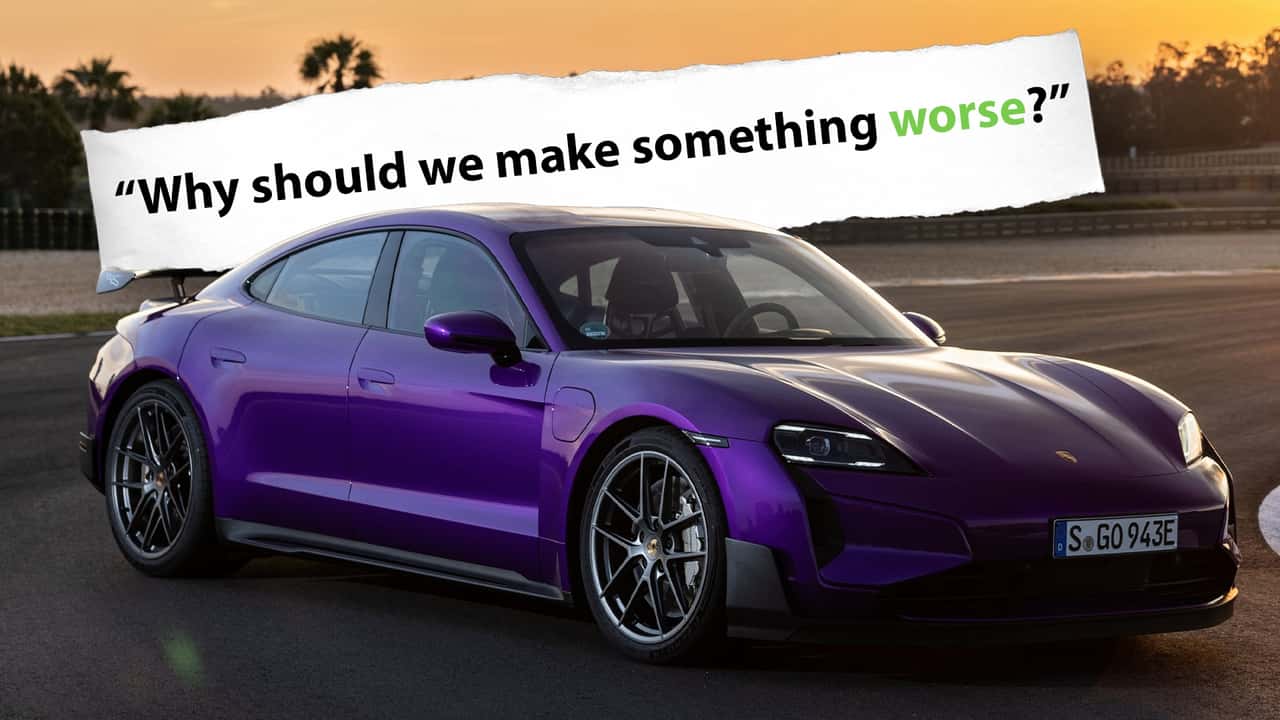- Hyundai may have added fake shifting to its EVs, but Porsche won’t.
- Porsche says the “electric engine is better than” ICE, and simulated shifting makes an EV feel “worse.”
- The automakers feels that there’s no point in simulating a combustion engine when it still produces them.
If you were hoping that your next electric Porsche might have simulated shifting like in the Hyundai Ioniq 5 N, I’ve got some rather unfortunate news for you. Following Hyundai adding fake shifting Porsche apparently looked into adding the tech to its cars but ultimately decided that the feature was a gimmick that made the EV feel “worse” than if it were not to have it at all.

“We drove the Hyundai [Ioniq 5] N and had a look at it, and, obviously, there’s always people who think that’s a good idea,” said Porsche development driver Lars Kern in an interview with Australian media outlet Drive. He later continued: “We came to the conclusion that that is not what we are looking for.”
Hyundai added its N e-Shift feature to the Ioniq 5 N earlier this year. The idea is to simulate the feeling that the driver would get from an eight-speed dual- clutch gearbox, something that the Ioniq 5 doesn’t have given that a single-speed electric drive unit has replaced the traditional combustion powertrain entirely. Sure, it sounds stupid, but like InsideEV’s Mack Hogan explains: it’ll win you over.

2024 Hyundai Ioniq 5 N
In short, it simulates the sounds and feel of a combustion engine—something that many enthusiasts inherently understand—back into driving by using the car’s speakers and regenerative braking.
Now, sure, in an EV, you don’t need to know where the redline is to shift, or what kind of power response to expect when mashing the gas at a particular rev range in a specific gear. But you quickly learn how to corral the EV with the stimulation of those senses, and that can help to better gauge turn-ins and general driving input.
Fun factor aside, Porsche just didn’t seem to agree. “Obviously, we look into what the competition does, but our perspective on this is always why should we make something worse?” Kern said. “I mean, because, in like just how it translates power or how power is applied? The electric engine is better than an ICE, so we figured there’s no reason to simulate what has been in the past.”
He continued, “I don’t see the point of using it to make it feel like a combustion engine because it’s not […] We don’t want to fake the combustion engine because we still produce combustion engines, so we don’t we don’t see the point of doing it.”

2025 Porsche Taycan Turbo S Sport Turismo First Drive
This isn’t the first time that Porsche has refused to jump on a trend. The automaker also recently said that it wouldn’t slap tablet-sized screens on the dashboards of its EVs, something that it feels like many automakers are doing today. But that’s not to say that it won’t do it in the future—just like simulated shifting.
Perhaps when Porsche pumps out its very last combustion motor it may find itself looking for ways to reminisce with the feeling of driving a car powered by gas and a traditional gearbox. But there’s something about the smooth, snappy acceleration of an EV that is, admittedly, longed for on combustion cars.
Maybe Kern is right. Or, maybe, Porsche should let its customers decide.
German luxury car manufacturer Porsche has made a bold statement regarding the use of fake shifting in electric vehicles (EVs), questioning the purpose of such a feature when it only serves to make the driving experience worse.
In recent years, many EV manufacturers have implemented fake shifting in their vehicles in an attempt to simulate the feeling of driving a traditional internal combustion engine car. This feature typically involves the use of artificial gear changes or a simulated engine noise to mimic the sensation of shifting gears.
However, Porsche, a brand known for its uncompromising commitment to performance and driving dynamics, has taken a stand against fake shifting in EVs. “Why make something worse?” questioned a Porsche spokesperson in response to the trend.
Porsche believes that the smooth and seamless acceleration of electric motors is one of the key advantages of EVs, and that adding fake shifting only detracts from this experience. “Our customers appreciate the instant torque and linear power delivery of our electric vehicles, and we see no reason to introduce unnecessary complexity that can compromise the driving experience,” the spokesperson added.
This stance aligns with Porsche’s philosophy of designing vehicles that deliver pure driving pleasure and unrivaled performance. The brand’s electric offerings, such as the Taycan, have been lauded for their exceptional driving dynamics and exhilarating acceleration, with no need for artificial enhancements.
By eschewing fake shifting in their EVs, Porsche is sending a clear message to the automotive industry: true performance excellence comes from focusing on the essentials and delivering an authentic driving experience. As other manufacturers continue to experiment with features like fake shifting, Porsche remains steadfast in its commitment to innovation that enhances, rather than detracts from, the driving experience.
In a market saturated with EVs seeking to replicate the feel of traditional combustion engine cars, Porsche’s rejection of fake shifting serves as a reminder that true performance and driving pleasure are not achieved through imitation, but through a relentless pursuit of engineering excellence and uncompromising dedication to the driving experience.

